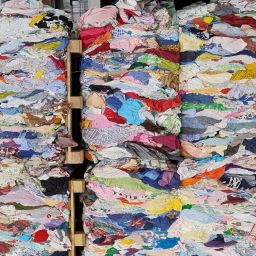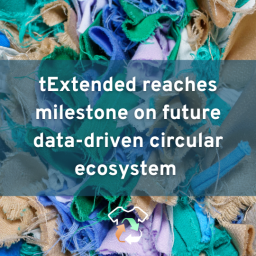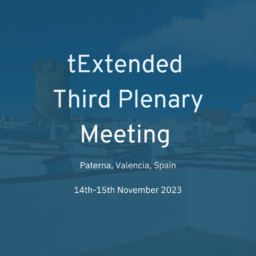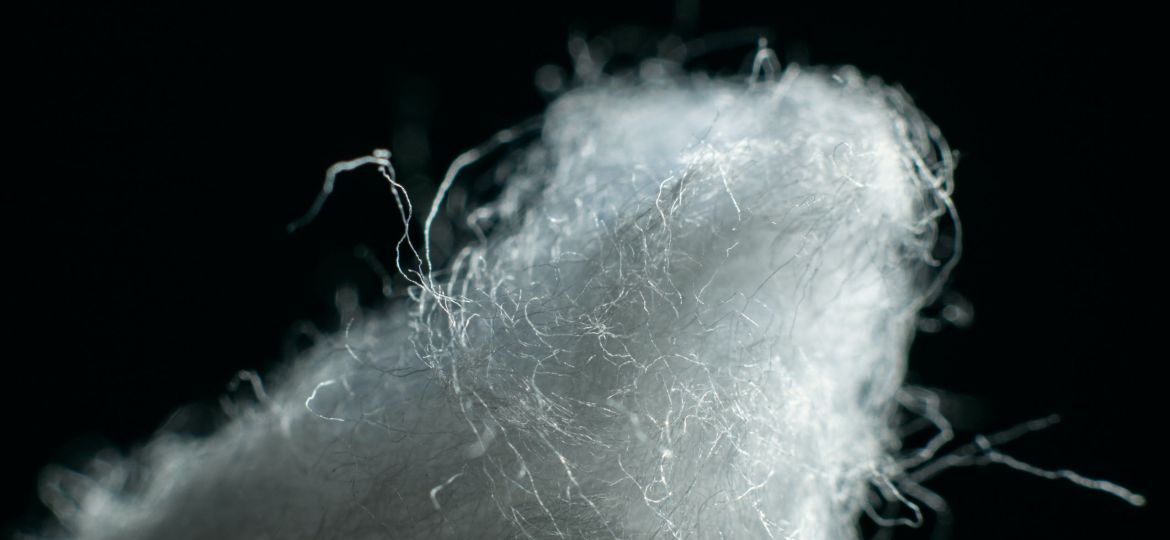
tExtended reaches milestone on upcycling processes
In November 2023, one year after the start of the project activities, tExtended has reached the Milestone 2, a significant stage in the development of the project solutions, defined as Proof-of-concept for novel waste valorisation and recycling processes.
Part of the work of the tExtended project focuses on studying, tailoring, and adopting existing digital tools, data driven solutions and digital technologies for circular textile ecosystem and make proof-of-concept level demonstrations for recovery of materials and waste valorisation and recycling into secondary raw materials. At this stage of the project, tExtended partners were expecting to demonstrate three lab scale processes for waste valorisation and recycling; we have been instead able to demonstrate six processes.
These processes include to two waste valorisation processes – colour removal from cotton (CO) (1) and colour removal from polyester (PES) (2); two polymer level recycling methods – Biocelsol process for separation of cotton and polyester from blends (3) and thermo-mechanical processing of PES (4); and two methods going to monomer level into fibre raw materials structure – glycolysis for depolymerization of polyethylene terephthalate (PET), which is most common type of PES in textiles (5), and solvolysis of mixed laminates (6).
1. Colour removal from cotton (CO) samples
CITEVE is developing a sustainable, two-step process for colour removal from cotton and its blends combining use of chemical and ozone treatment. The Process have been applied to 100% cotton and it has shown effective removal of colours, as shown in Fig. 1.
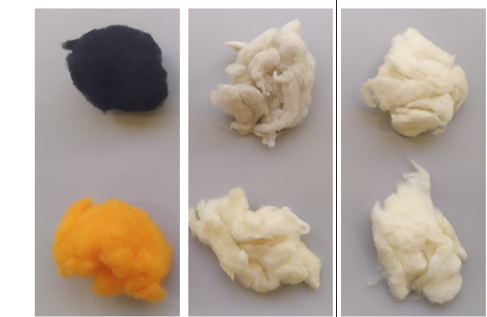
2. Colour removal from polyester (PES) samples
RISE is developing removal of disperse dyes for decolourisation of polyester using solvent treatment in elevated temperature. This process, being reverse process for dyeing, has proven effective for extracting dye molecules/pigments from polyester. The optimization of process parameters is still on-going, but the effect of removal process on colour of woven PES sample can be seen from Fig. 2.
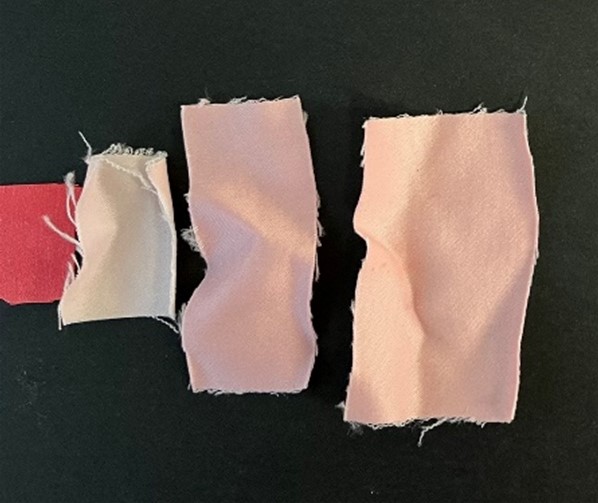
3. Biocelsol process for separation of cellulose and PES from cotton-PES blends
VTT is studying the use of Biocelsol process for dissolution of cellulose from cotton-PES blends and thus separate the solid polyester, Fig. 3. The aim is to develop the process enabling the recovery of both of these fractions for further utilization: cellulose solution can be wet-spun into man-made cellulosic fibres and PES utilized either via melting or re-polymerization depending on its quality.

4. Thermo-mechanical processing of PES with MODIX
VTT has created the MODIX extruder for open-loop recycling for plastic materials, including light and fluffy textile materials. It has been successfully used for the melting and compacting of thermoplastic polyester fabric not suitable for fibre-to-fibre recycling as shown in Fig. 4. Grinded material can be further processes with injection moulding machine that are used to form plastic samples.
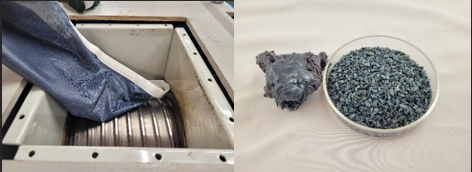
5. Glycolysis process for chemical recycling of PES
RISE is studying the use of environmentally friendly catalysts for glycolysis process, which is a well-known process for chemical recycling of PET packages and textiles. In this process PES is depolymerised into a monomer (namely bishydroxy ethylene terephthalate, BHET) i.e., the building block of the polymer, that easily can be re-polymerised to obtain new PET material with virgin properties.
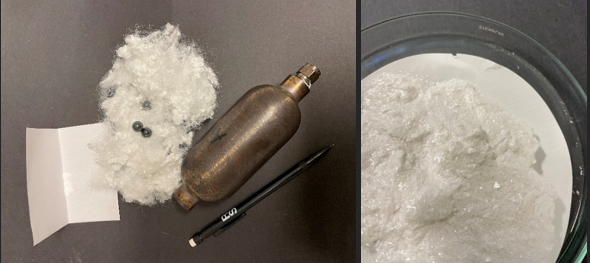
6. Solvolysis of PU foam from textile sector
AIMPLAS is working with ERT Têxtil and SOPREMA to develop solvolysis process for chemical recycling of polyurethane foam offcuts from the textile sector. In this chemical process solvents are used to cause the depolymerisation of the materials into polyols, which can be used in production of new polyurethane foams.

These processes will influence the upcoming work towards the tExtended goals.
The process of colour removal is crucial in the step of preparing the textile materials for chemical recycling as well as in the valorisation of the textile materials for mechanical recycling. The opened fibres can more easily be combined with other recycled or virgin fibre, and subsequentially dyed; however, the fibres should not be degraded mechanically. Colour removal from cotton (CO) samples allows to remove the colour from fabrics without using hazardous chemicals by applying ozone, which is instead a green technology. The benefit of colour removal from polyester (PES) samples of the textile is that the value of a white or off coloured textile is higher when mechanically recycling. Decolourisation will give a higher value also when the textile or the fibres will be chemically recycled by depolymerisation, as transparent/white monomers have a higher value.
The work done on Biocelsol process can dramatically increase the recyclability of blend textiles. If high enough purity is achieved, both materials can be used for the production new textile fibres or utilized in plastic/composite products (polyester) or in other regenerated cellulose products, like films. Thermo-mechanical processing of PES with MODIX can be used for specific textile materials, as MODIX equipment can be a pre-processing step for light and fluffy materials, which cannot be mechanically recycled to textiles. MODIX can process textile streams into such a form that they can be processed using conventional thermoplastic processing technologies.
Though mechanical fibre level recycling and polymer level recycling methods always should be the first options for recycling, chemical recycling methods, such as by glycolysis and solvolysis, hold the potential of resulting in a recycled secondary raw material with virgin properties. There are always also textile streams or blends that are not suitable for other recycling methods, and then such chemical methods may offer feasible option to secondary raw materials for textile or to other sectors.
For any enquiries about further information on the processes described in this article, please contact Claudia Esposito, EU Project Manager, at: cesposito@carrcommunications.ie


